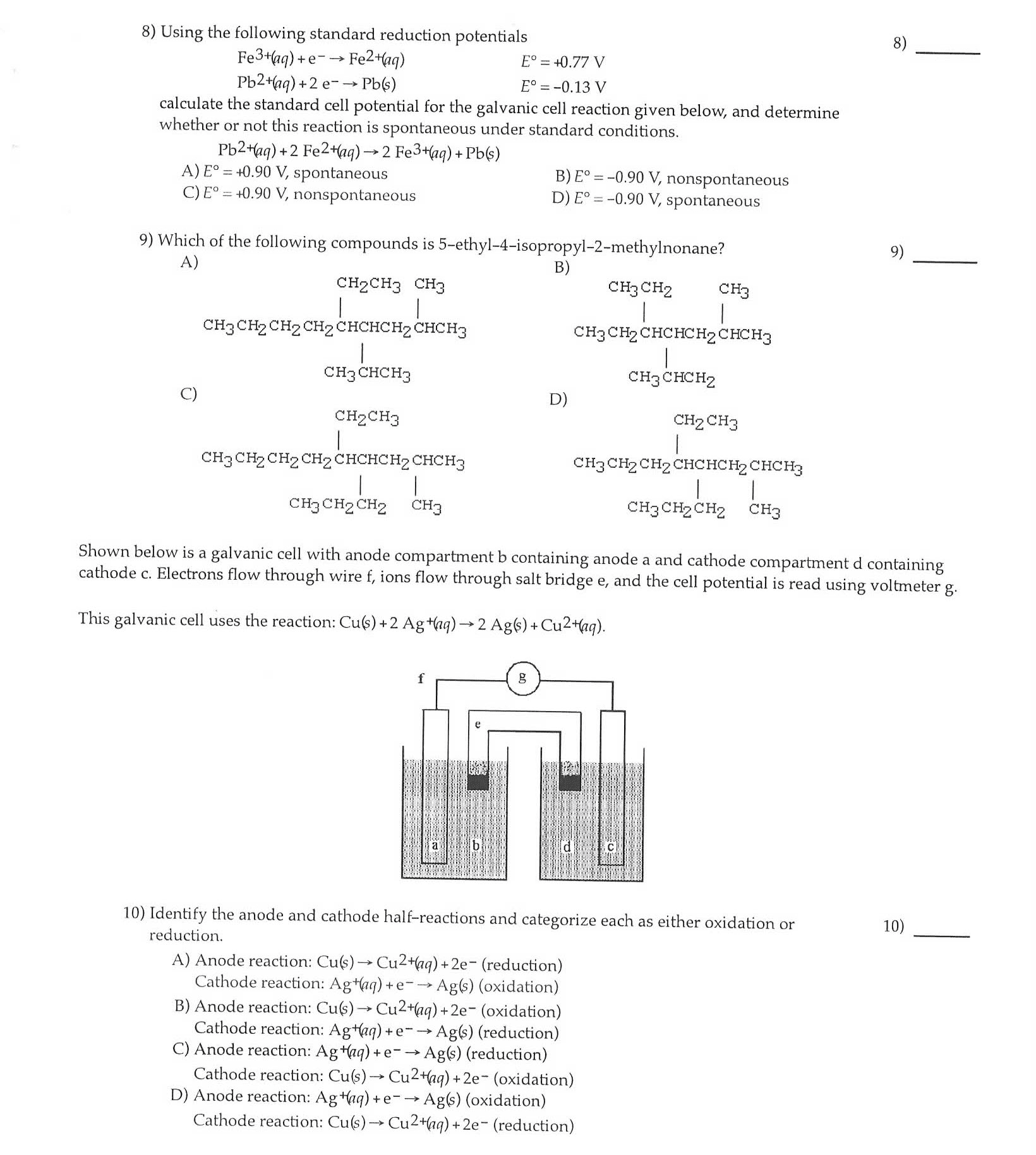CHM 132 Chapter Notes - Chapter 11: Galvanic Cell, Membrane Potential, Voltmeter
Document Summary
If you separate the two half reactions of a full reactions in different containers with a wire passing between them, then e- will flow from the oxidized reaction to the reduced reaction. Without a salt bridge or porous disk, the flow of electrons will stop pretty quickly because of the build-up of charge on either side. These elements allow ion flow without extensive mixing of solutions and therefore balance charge on both sides. Galvanic cell a device in which chemical energy is changed to electrical energy in a spontaneous way (eo > 0) Anode electrode that is in the solution undergoing oxidation. Cathode electrode that is in the solution undergoing reduction: electrons flow from anode to cathode. Standard states (cid:1005) at(cid:373) = p, (cid:1006)5 c = t, (cid:1005)m = [ ], I(cid:374) o(cid:396)de(cid:396) to (cid:272)(cid:396)eate o(cid:374)e"s o(cid:449)(cid:374) (cid:272)ell: take two standard reduction reactions and their potentials.



